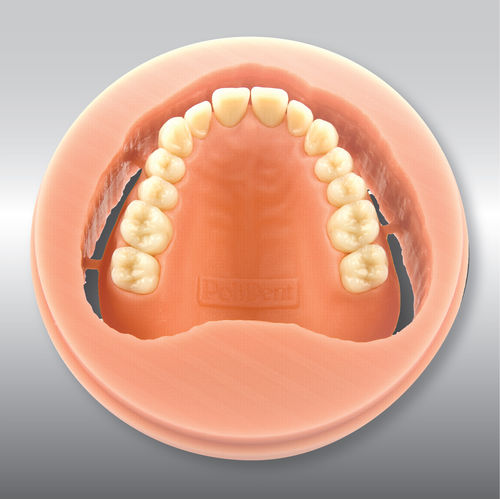This is a sample DA 4856 (Developmental Counseling Form) for a Soldier transferring to the Individual Ready Reserve (IRR) with at least three years of active duty, or at least two years of active duty + three years of Troop Program Unit (TPU) time. These soldiers transfer to the IRR control group for reinforcement.
Soldiers in this control group are not required to do annual training. Since policies change, some of the items listed below may change as this article gets older.
Note: if you do not have the minimum three years of active duty, or two years of active duty +3 years of TPU, you’d be requesting transfer to the IRR, Control Group-Training. You would have an AT requirement each year in the IRR.
The Soldier in this scenario has completed his or her six-year contractual obligation in the TPU. He or she wishes to complete the balance of his or her eight-year initial military obligation in the IRR.
Applicable sections of the Army Developmental Counseling Form for a Soldier transferring to the IRR, Control Group Reinforcement:
DA 4856: Purpose of Counseling:
Event Oriented Counseling: You are being counseled on your decision to submit an Individual Ready Reserve (IRR) transfer request.
You declared your intention to complete the remainder of your contractual obligation in the IRR.
Your Contractual Obligation ends [DFAS date format]. Your Statutory Obligation ends [Actual ETS date, DFAS date format]. Despite your transfer from the TPU into the IRR, you’ll still be a member of the Ready Reserve. You are not “out” or “discharged” from the military. Although your transfer into the IRR will allow you to keep many ready reserve benefits, some key benefits of being in the TPU will end. As the [title of counselor], it’s my responsibility to ensure that you understand the options that are available to you.
DA 4856: Key Points of Discussion:
– As a member of the TPU, you are eligible for the following benefits: Common Access Card (CAC), military pay for IDT and AT/ADT; SGLI; Tuition Assistance; TSP; Montgomery GI Bill (Ch 1606); the appropriate TRICARE coverage, reserve military pension if you complete 20 qualifying years, etc. If you chose to continue into the IRR, some of these benefits will discontinue. However; you’ll be eligible for the remainder of your military benefits while in the IRR. You still need to earn 50 points for retirement each year in the IRR for that year to qualify for retirement eligibility. You must also surrender your CAC upon IRR transfer.
– As a member of the IRR, you are eligible for the following benefits: DD Form 2, reserve ID card (Green). Military pay for AT/ADT/mobilization; reserve military pension if you complete 20 qualifying years; PX/Commissary privileges; the appropriate TRICARE dental coverage, a green military ID (IRR) card, and other benefits. However; in order to maintain these benefits, you have to continue to participate satisfactorily in the IRR by responding to HRC’s correspondence, attending annual musters (paid), and by doing any other point gaining activity you’re authorized to do.
– HRC will mail muster orders to you each year. Your annual musters will take place 1 day a year, and will range from 2 to 8 hours. If you’re receiving VA disability compensation, you will receive both muster and disability pay. Ensure that HRC has your latest/accurate contact information. Since you have at least [3 years active duty ___ (or) 2 years active duty +3 years TPU__], you will be transferred into the IRR Control Group, Reinforcement. You will not have an AT requirement during IRR; however, you may request such training.
– You can earn your points from days on mobilization/active duty, AT/ADT, funeral duty, IDT/Drill (points only), and participation points (PP). The maximum inactive points (IDT + PP) that you could get in a retirement year is 130 points. You get one active point for every day on active duty. The maximum active points you could get in the year is the number of days that year has. You can also drill for points only, not pay, while in the IRR.
– As a member of the IRR, you’ll be entitled to a military ID card (IRR/green). You’ll still have access to a military installation’s DEFAC, PX, Commissary, MWR facilities, physical fitness facilities, etc. Your SGLI will expire per instructions on your IRR orders. If you’re a veteran (prior active service/deployment), you may be eligible for VGLI. If TRICARE was your only medical insurance, you may need to make arrangements with a commercial health insurance provider.
– HRC will maintain your records. They’ll work with you to schedule your AT or to get you onto mobilization orders. Here’s the Army’s website, MOBCOP, you could use to volunteer for mobilization while in the IRR: [Volunteer for mobilization website address.]
– If you fall short of 50 points in a retirement year, those years will not count towards the 20-year minimum to be eligible to retire with pay. Within 3 months of your ETS, or sooner, notify HRC of your intention to ETS in order to receive ETS orders.
– The unit cannot make any guarantees towards approval or disapproval of your IRR request.
– You feel that you’re unable to continue with the TPU due to [Reason explained below].
DA 4856: Plan of Action:
– Consider the above advantages of remaining in the TPU, and consider the possibility of enlisting into a new TPU contract.
– The unit will initiate and process an IRR transfer request. Maintain communication with the unit and assist with the IRR packet process. Provide additional documentation if requested. Be available to sign revised documents.
– Until you receive your IRR orders, keep the unit updated if you experience a change in address, phone number, email, etc.
– You’re responsible for drilling with the unit until the transfer date on your IRR orders.
– If you must RST before your transfer date, submit an RST request form and supporting documentation through your chain of command.
– Out-process with the Supply SGT, Motor SGT, Operations NCO, UA, UAT, 1SG, CDR, DARN, and other applicable unit sections.
– Download a copy of the IRR handbook from the Internet, or obtain it from a Soldier that has already downloaded it.
– Familiarize yourself with the above mobilization opportunity websites.
– Upon transfer to the IRR, surrender your CAC card at the nearest military ID card office, and obtain your DD Form 2, Reserve ID card (Green).
– Understand that while in the IRR, you’re not “out” of the military. You’re still in the ready reserve, subject to annual muster and subject to mobilization.
– Continue to engage in physical fitness to help maintain your deployable status.
– Strive to achieve a minimum of 50 retirement points for each retirement year in the IRR.
– Answer HRC correspondences to you requiring a response. Store HRC information correspondences in a specific folder for future reference.
– Fully read and understand your HRC muster orders, and report for muster as instructed in these orders. Bring requested documentation.
– Surrender your Reserve ID card in the event of your reenlistment with the TPU or Active Duty; receive a CAC in its place.
– You can drill with this or another unit if you need points, but not for pay, while in the IRR status. The Career Counselor has details on how you can accomplish this.
– At the end of your MSO, with no reenlistment, surrender your DD Form 2, Reserve ID card (Green).
– Understand that the day after your MSO ends, you may automatically end up in the Militia of the United States and of the state/territory you reside in. Federal law identifies able bodied males from 17 to 45, state law identifies similar or different age ranges. Some states include women in that category. This means that after your MSO ETS, if you’re in this group, you’re subject to militia muster by orders of the president or your governor.
– Effective your transfer into the IRR, the IRR unit patch becomes your unit patch. You’ll also use the IRR regimental badge in place of [current unit badge] on your ASUs.
– While in the IRR, maintain communication with HRC and update them with your latest address, phone, email, job, medical status, etc., changes.
DA 4856: Session Closing:
– I understand the options and current SRIP incentives available to me for continuing with the TPU. I will lose TPU specific benefits while maintaining IRR specific benefits once I’m officially in the IRR. While in the IRR, I’m eligible to earn at least 50 retirement points for that year to count toward retirement. I may get those points via mobilization, HRC issued AT orders, etc. I may be subject to an APFT at the beginning of an HRC issued AT order. I will keep HRC posted on address, phone number, and email changes while I’m in the IRR. I will surrender my CAC and obtain a DD Form 2 (Reserve) green ID card upon transfer into the IRR. At the end of my MSO, I Will surrender this green ID card at the nearest ID card office. I will continue to drill and maintain communication with the unit until the date on my IRR transfer orders. After my transfer into the IRR, I’ll maintain communication with HRC. I will familiarize myself with the key points of discussion, and carry out the courses of action.
– Despite what has been discussed above, I wish to request transfer to the IRR. I understand that there’s no guarantee regarding this packet’s approval or disapproval.
References:
AR 140-10 Army Reserve Assignments, Attachments, Details, and Transfers
AR 140-185 Training and Retirement Point Credits and Unit Level Strength Accounting Records








